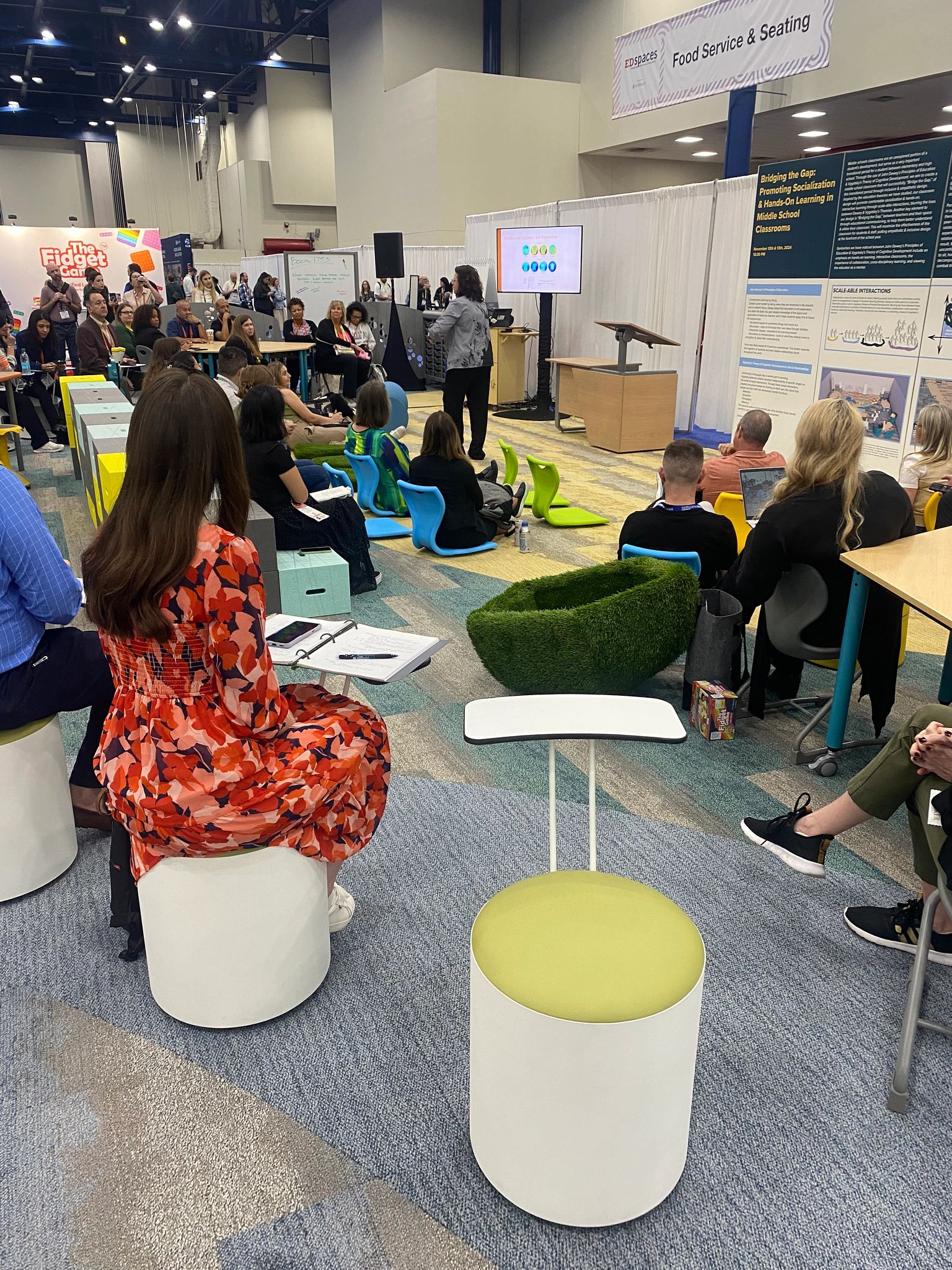Education K12
Creating Interactive Classrooms: Flooring Solutions for Middle School Learning
Bridging the Gap: Promoting Socialization and Hands-On Learning in Middle School Classrooms
Article Written by: Katie Marvel Shaw Contract Marketing Manager Published by: Shaw Contract

Middle school classrooms are often an unexplored portion of a student's development but serve as a very important transitional period for a student between elementary and high school. Through the use of John Dewey's Principles of Education and Vygotsky's Theory of Cognitive Development, this framework will aim to create a middle school classroom that will successfully, "Bridge the Gap," of this transitional period through inclusive and empathetic design.
Inspired by the education theories studied, this classroom design will promote comfortable socialization and hands-on, interactive learning through scalable interactions, blurring the lines between Dewey and Vygotsky's Theories.

Another key element to the design is "Bridging the Gap," between teachers and their space through educational commissioning, to help them better understand and utilize their classroom. This will maximize the effectiveness of the classroom for students and staff, putting empathetic and inclusive design at the forefront of the school year.
Similarities between John Dewey's Principles of Education and Vygotsky's Theory of Cognitive Development include an emphasis on:
- Hands-on learning
- Interactive classrooms
- The importance of collaboration
- Cross-disciplinary learning
- Viewing the educator as a mentor
Through empathetic and inclusive design, one can create spaces that instill a sense of community, safety, security and relaxation for students and staff. When we design with empathy, we think about individual needs, as well as how the classroom space can provide support for a variety of people. Paying attention to small details, such as providing varying types of seating to accommodate for students with changing bodies and study spaces geared towards different types of students, can make such a huge impact.
Middle School Classroom Design Starts with Understanding Students

To provide these spaces, first understand what stressors students and staff are facing in these environments. Particularly in middle school, students grow and their needs change; therefore, their learning environment must change too.
During this time there is a greater desire for autonomy, as well as a shift toward peer-centered culture. This is why students seek greater independence, relatedness and self-efficacy. However, middle school students often experience the opposite of this - a tightening of control, reduced quality of relationships with their teachers and increased academic expectations. As a result, they lack the support they need from their environment during this uncomfortable and stressful time. Providing students with choices on where to sit, how to sit, sensory breaks, changes for emotional expression, decompression and a perception of safety and cleanliness are ways we can combat these issues.
Shaw Contract Carpet Tile Supports Middle School Classroom Design
Shaw Contract was proud to collaborate with AIA’s Committee on Architecture for Education (CAE) to support the vision for innovative learning environments at their EDSpaces 2024 booth, “Bridging the Gap”. This content is based on a session presented and led by Kelsey Jordan, Senior Architect & Educational Planner with LEGAT. Christopher Zhu, Project Architect with Stantec Madeline Hilby, Interior Designer with BKV Group; and Sarah Pranto, Architect with INTEGRUS.
Shaw Contract’s Local Landscapes carpet tile collection was featured in the exhibit, complementing the furniture contributions that create a cohesive and inspiring space. Together, we aim to foster design solutions that support students, teachers and schools during critical periods of development.
March 14, 2025